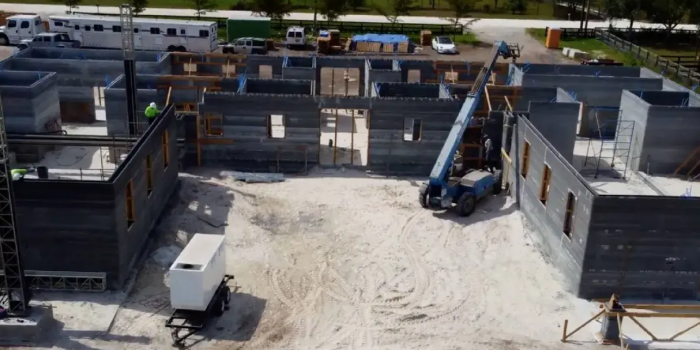COBOD, a company specializing in the development of multifunctional construction robots using 3D printing technology, has recently achieved another remarkable feat in the field. Their latest project, named Printed Farms, involved the construction of the world’s largest 3D printed building, a luxurious horse barn.
The newly completed Printed Farms facility is an impressive structure, spanning a total floor area of 10,105 square feet (939 square meters) and standing at a height of 13 feet (4 meters). Its length measures a staggering 155 feet (47 meters), while the width reaches 83 feet (25 meters). COBOD’s BOD2 construction 3D printer played a crucial role in bringing this project to life.
Philip Lund-Nielsen, Co-founder and Head of Americas at COBOD, expressed his admiration for Printed Farms’ achievement and emphasized how 3D printing is revolutionizing the construction industry. He also highlighted COBOD’s pride in being the technology supplier for this groundbreaking project, especially considering the recent completion of the first two-story 3D printed building in Texas using their BOD2 printer.

Lund-Nielsen further emphasized the versatility of COBOD’s 3D printers, which can be utilized for various applications beyond housing, such as turbine bases, schools, office buildings, data centers, and even horse barns.
Situated in Wellington, Southern Florida, the Printed Farms horse barn has been designed to withstand extreme local weather conditions, including hurricanes and tropical storms. The 3D-printed walls of the building create a cavity and air gap, providing natural cooling. The construction process involved five printer moves, with the two sides completed twice and the middle section executed once.
COBOD has a rich history of 3D printing achievements. They were responsible for Europe’s first 3D-printed building in 2017 and subsequently expanded their reach to construct the first two- and three-story facilities in Europe, North America, and India. Furthermore, COBOD’s printers were used to build the first 3D-printed villa in Dubai and various African buildings.
With a vision to automate at least 50 percent of construction processes on building sites, COBOD aims to revolutionize construction practices, making them better, faster, cheaper, and more sustainable than traditional concrete methods.
Overall, COBOD’s successful completion of the world’s largest 3D printed building paves the way for a future where buildings can be efficiently and sustainably constructed using automated processes, heralding a new era in the construction industry.


